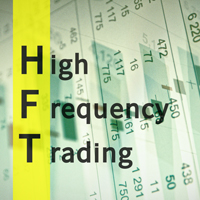

High-Frequency trading (HFT) is a type of trading that involves the use of algorithms and advanced technology to execute trades at high speeds and frequencies. This type of trading has become increasingly popular over the last decade due to its ability to process vast amounts of data and execute trades in real time, providing traders with an edge in the market.
HFT involves using computer algorithms designed to analyze and process market data in real time. These algorithms use complex mathematical models to identify trends and patterns in the market, and then execute trades based on these signals. HFT traders can execute trades in a matter of microseconds, giving them a significant advantage over traditional traders, who may take several seconds or even minutes to execute a trade.
One of the main advantages of HFT is its ability to process and analyse vast amounts of data in real-time. This allows traders to make decisions based on up-to-date information, rather than relying on historical data or intuition. HFT algorithms can analyse market data such as order book data, news feeds, and social media sentiment, to identify patterns and trends that may not be immediately apparent to human traders.
High-frequency and high-speed trade executions are other benefits of HFT. HFT traders can execute trades in a matter of microseconds by utilizing cutting edge technology like co-location, which entails positioning servers close to exchange servers. This allows them to take advantage of even the most minor market inefficiencies and make quick profits.
Despite its advantages, HFT has come under scrutiny in recent years due to concerns about its impact on market stability and fairness. One concern is that HFT may negatively impact market volatility by amplifying small fluctuations in the market. This can lead to sudden price swings and can potentially trigger market crashes. Additionally, HFT has been criticized for creating an uneven playing field for traditional traders, who may not have access to the same advanced technology and data analysis tools.
In response to these concerns, regulators of markets all over the globe for e.g., SEBI, SEC, etc. have implemented several measures to regulate HFT.
HFT remains a popular trading strategy, despite these regulatory measures, particularly among institutional investors and hedge funds. Many of these firms have invested heavily in advanced technology and data analysis tools in order to gain an edge in the market. However, the benefits of HFT are not limited to large institutional investors. Individual traders can also take advantage of HFT strategies by using automated trading systems that are designed to execute trades at high speeds and frequencies.
High-Frequency Trading has revolutionized the way that traders approach the market. By using advanced technology and algorithms, HFT traders can process vast amounts of data in real-time and execute trades at lightning-fast speeds. While HFT has come under scrutiny in recent years due to concerns about its impact on market stability and fairness, it remains a popular trading strategy among institutional investors and hedge funds. For individual traders, automated trading systems offer a way to take advantage of the benefits of HFT without having to invest in expensive technology and data analysis tools.
This was about High-Frequency Trading. To know more about such other trading concepts, attend our Free Power Money Workshop.
Learn stocks trading course, derivatives and trading strategies from sharekhan Education’s online Mastering futures and options trading course.